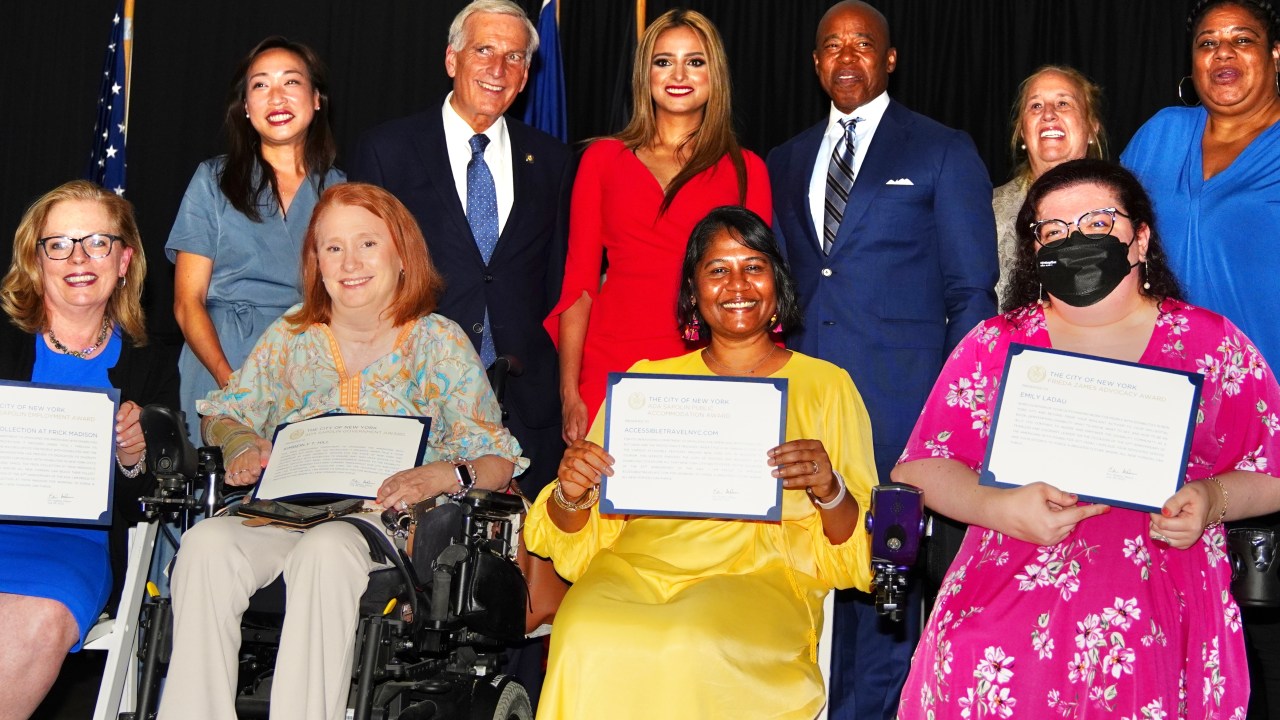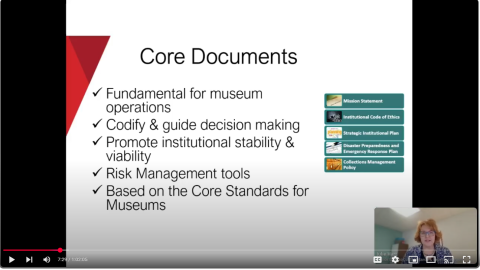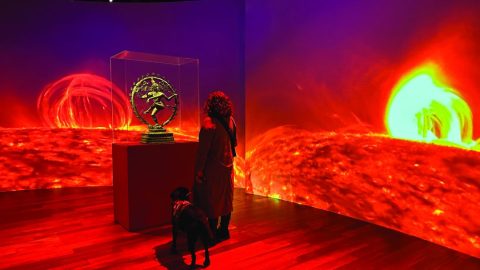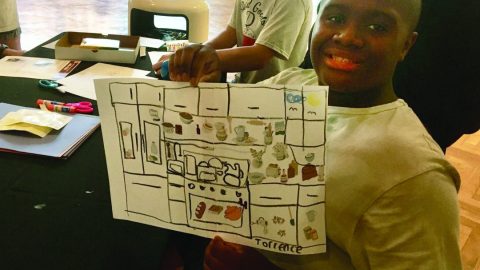
The museum sector is working to increase the diversity of our workforce through a variety of ways: for example, how we craft position requirements, word job announcements, and conduct interviews. That is helping museums make some progress towards ensuring that the demographics of staff mirror the racial and cultural diversity of their communities. However, these equity and inclusion efforts rarely address the employment of people with disabilities. In response to a recent survey fielded by AAM’s Facing Change initiative, 14 percent of museum staff, board members, and volunteers identified as people with disabilities. That’s better than the US workforce overall (of which people with disabilities represent about 3.6 percent), but there is room for improvement. According to the Center for Disease Control, over one quarter of American adults identify as having a disability of some kind. Today on the blog, Dana Spencer Winfield, Chief Human Resources Officer at The Frick Collection, tells us how her organization is tackling this challenge.
–Elizabeth Merritt, Vice President Strategic Foresight and Founding Director, Center for the Future of Museums, American Alliance of Museums
According to the US Bureau of Labor Statistics, nearly 17 percent of adults with disabilities in New York City were unemployed in 2021 (compared to 6.9 percent of New Yorkers overall). Given figures like these, and the struggles museums currently face in filling open positions, it just makes good business sense to include people with disabilities in recruitment efforts.
At The Frick Collection, we began this effort in 2015, when Gretchen Z at Job Path NYC wrote to me and our director, Ian Wardropper, about a young person who lived near the museum. That person, “Alex G,” is neurodivergent, loves museums, and had been interning for one of our sister institutions. He and Gretchen were researching ways for him to find meaningful employment customized to his specific interests and capabilities.
As the first Chief Human Resources Officer at The Frick Collection, I had been working for almost twenty years to promote and support a welcoming and inclusive community. My background in human services, mostly in community health and with the AIDS community, equipped me to work with a broad spectrum of diverse colleagues and partners. And, critically, we had support from our director: Ian asked me if I wanted to continue the conversation with Job Path and, heck yes, I did!
Job Path helps people with developmental disabilities find meaningful work, live at home, and be involved in their communities—it is exactly the kind of local partner that can help museums integrate people with disabilities into the workforce. Using a model of customized employment, their staff determine what a client is good at and how employers can engage those skills in the workplace. In our case, a Job Path coach worked with our staff to identify how Alex might support inventory efforts in our shop. Together we developed a job description and schedule that would work for all concerned.
Since March 2015, with a brief hiatus during the height of the pandemic, not a single piece of inventory in our museum shop has hit the shelves without Alex counting and labeling the item. Alex works one day per week, accompanied by a job coach who provides support and redirection when he needs it, and completes 100 percent of the tasks assigned to him by himself. Like every employee of the Frick, Alex and his family have become part of the Frick family. We’ve gotten to know him and his parents, and they and the Job Path staff all participate in Frick functions and employee events and trainings.
Since we began our relationship with Job Path, we have found additional opportunities to employ their clients in retail and visitor services and other departments. Two of these colleagues are master’s-degree-level trained librarians, now working in the Frick Art Reference Library, one of whom has skills and experience with Russian language materials. One Job Path recruit started out working in the library, and now we are expanding their role to provide support to our education department.
Working with Job Path has enabled The Frick Collection to establish new relationships with the disability community in New York. Since that initial introduction, we have partnered with the NYC Mayor’s Office for People with Disabilities (MOPD) through their NYC AT Work program and with AHRC (an advocacy organization for neurodivergent individuals). With support from NYC MOPD, we have provided disability etiquette and awareness training to our entire staff on multiple occasions. These sessions are appreciated equally by staff who have and have not worked with Job Path clients, with many remarking that they offer invaluable insights for life beyond the office. We have participated in job fairs, practice interview sessions for clients, and in panel discussions for sister institutions, the NYC Office of Cultural Affairs, disability leaders from other cities, and the National Endowment for the Arts, among others.
Meaningful employment is part of what makes people whole—something we want for ourselves and for everyone in our lives, including people with disabilities. It only took a little bit of extra work (a couple meetings and the creation of a customized job description) to find a place for Alex on our staff, and that opened us up to so many new possibilities and people. Just that bit of extra work, together with commitment from our leadership, has enabled us to welcome a more diverse group of people to our workforce. We think of it as dropping a pebble in a pond, a very small action that has an incredible ripple effect.
I hope that these thoughts on employment of people with disabilities will expand museum conversations nationwide about a timely and mutually beneficial human resources endeavor. We’ve all become attuned to the need for museums to accommodate people with disabilities to our museums as visitors. Employing people with disabilities has lagged, but is equally relevant to our DEAI conversations. It may feel like a complicated challenge to museums with slim resources and little experience in this area, but working with partners, as we did at The Frick, can bring wonderful results. I welcome a conversation with you on this important topic through the comments on this post below or via email—winfield (at) frick.org.
Dana Spencer Winfield (she/her) is the first Chief Human Resources Officer at The Frick Collection. She began her HR career in Boston nearly thirty-five years ago working in the community health realm. She moved home to New York in the mid-1990s to work with the New York State AIDS Institute providing HR consultation to community health centers on recruitment and retention of AIDS service providers. Dana arrived at the Frick in 2002 and has partnered with amazing colleagues to support an open, accessible, and welcoming workplace.
The Frick was honored by Job Path as their Employer of the Year in 2017, by the New York State Assembly in May 2022 with a citation for their efforts on enhancing employment opportunities for people with disabilities, and on the anniversary of the Americans with Disabilities Act in July 2022, with the New York City Mayor’s Sapolin Accessibility Award for Employment.
Dana would be happy to continue the conversation and support other museums in their disability employment and diversity efforts and can be reached directly at winfield (at) frick.org.








This is a wonderful article and I thank you for your efforts. I rarely talk about my own disability, but I feel compelled to mention that there is a huge elephant in the room when it comes to welcoming people with disabilities into the museum work force – health insurance. There are a great many museums that still do not offer health insurance, or only offer high cost, high deductible options. As a person with a disability, no or subpar health insurance is an enormous obstacle that limits my career options. I have had to turn down positions that I was excited about once I discovered that I could not afford to care for my myself. My disability is invisible and I rarely need special work accommodations, but I do need to have health insurance that provides coverage that allows me to proactively manage my health while not leaving me bankrupt. We have all paid attention as museum workers unionize and strike for fair pay and reasonable benefits. Absolutely every one deserves that, but I must also point out that, for people with disabilities, the lack of affordable quality health insurance is a DEAI issue.